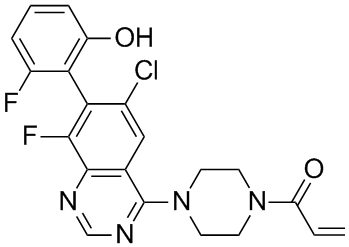The existence of endogenous dcEFs in the mammalian brain raises the possibility that woundinduced dcEFs may play a role in guiding endogenous NPCs to the site of injury. Given our work demonstrating the significant contribution of endogenous SE-derived NPCs to tissue regeneration and functional recovery following stroke, we asked whether adult SEderived NPCs could be induced to undergo cell body translocation in a rapid and directed fashion in the presence of a dcEF. Importantly, we examine the effects of dcEFs on differentiated neural cells as the ability to selectively target NPCs is an important consideration for developing neural repair strategies. Herein we have used live cell time-lapse imaging to perform an extensive kinematic analysis on pure populations of adult SE-derived NPCs and their differentiated progeny. We demonstrate rapid and directed cathodal migration of NPCs in vitro in the presence of a dcEF. The migration persists only for as long  as the dcEF was applied, and removal of the dcEF results in the quick diminution of galvanotaxis. Moreover, we show that NPC cathodal galvanotaxis is unchanged in the presence of continuous media crossperfusion demonstrating the phenomenon is a direct effect of the electric field and not a secondary chemotactic effect. Most interesting, we show that the migration is specific to undifferentiated NPCs and is not observed in the differentiated progeny of NPCs. Finally, we demonstrate that EGF signaling plays a role in the speed of the migratory behaviour with little effect on the directedness. We suggest that harnessing the migratory potential of NPCs in the presence of an electric field in vivo may provide means to enhance endogenous neurorepair and tissue regeneration elicited by SE-derived NPCs. We considered that the lack of galvanotactic behaviour observed among differentiated cells could be due to the prolonged period of time that the cells are adhered to the Matrigel substrate in the galvanotaxis chambers prior to dcEF exposure. We asked if differentiated cells would undergo galvanotaxis if they adhered to the Matrigel substrate for only 17 hours, similar to the length of time that undifferentiated NPCs were maintained and exhibited galvanotaxis. Accordingly, NPCs were cultured for 52 hours in 1% FBS as free-floating neurospheres, and subsequently plated into Matrigel-coated galvanotaxis chambers for 17 hours in 1% FBS prior to application of the dcEF. We observed no significant difference in the migratory behaviour of differentiated cells after 17 hours versus,70 hours of adhesion indicating that the lack of galvanotactic behaviour is due to their differentiated state, and not the prolonged binding period to Matrigel that is required to achieve FBS-induced maturation. Immunostaining post-dcEF application verified that the cells had differentiated. Studies have indicated that the galvanotactic response of corneal epithelial cells, keratinocytes, and hippocampal precursors is dependent on EGF receptor signaling. We asked whether the lack of galvanotaxis exhibited by differentiated cells was due to the lack of exogenous growth factors in the culture media during exposure to the dcEF. NPCs were first exposed to differentiation conditions for 69�C72 hours on matrigel-coated chambers. Following this, the culture medium was aspirated and replaced with growth factor-supplemented medium and the pre-differentiated cells were then immediately exposed to a dcEF.
as the dcEF was applied, and removal of the dcEF results in the quick diminution of galvanotaxis. Moreover, we show that NPC cathodal galvanotaxis is unchanged in the presence of continuous media crossperfusion demonstrating the phenomenon is a direct effect of the electric field and not a secondary chemotactic effect. Most interesting, we show that the migration is specific to undifferentiated NPCs and is not observed in the differentiated progeny of NPCs. Finally, we demonstrate that EGF signaling plays a role in the speed of the migratory behaviour with little effect on the directedness. We suggest that harnessing the migratory potential of NPCs in the presence of an electric field in vivo may provide means to enhance endogenous neurorepair and tissue regeneration elicited by SE-derived NPCs. We considered that the lack of galvanotactic behaviour observed among differentiated cells could be due to the prolonged period of time that the cells are adhered to the Matrigel substrate in the galvanotaxis chambers prior to dcEF exposure. We asked if differentiated cells would undergo galvanotaxis if they adhered to the Matrigel substrate for only 17 hours, similar to the length of time that undifferentiated NPCs were maintained and exhibited galvanotaxis. Accordingly, NPCs were cultured for 52 hours in 1% FBS as free-floating neurospheres, and subsequently plated into Matrigel-coated galvanotaxis chambers for 17 hours in 1% FBS prior to application of the dcEF. We observed no significant difference in the migratory behaviour of differentiated cells after 17 hours versus,70 hours of adhesion indicating that the lack of galvanotactic behaviour is due to their differentiated state, and not the prolonged binding period to Matrigel that is required to achieve FBS-induced maturation. Immunostaining post-dcEF application verified that the cells had differentiated. Studies have indicated that the galvanotactic response of corneal epithelial cells, keratinocytes, and hippocampal precursors is dependent on EGF receptor signaling. We asked whether the lack of galvanotaxis exhibited by differentiated cells was due to the lack of exogenous growth factors in the culture media during exposure to the dcEF. NPCs were first exposed to differentiation conditions for 69�C72 hours on matrigel-coated chambers. Following this, the culture medium was aspirated and replaced with growth factor-supplemented medium and the pre-differentiated cells were then immediately exposed to a dcEF.
The experts at http://www.tolllikereceptor.com/index.php/2019/02/24/striking-lead-improvement-lv-ef-long-term/ have put together much more info on very important to predict precisely the risk of poor prognosis in order to maximize the therapeutic effect.